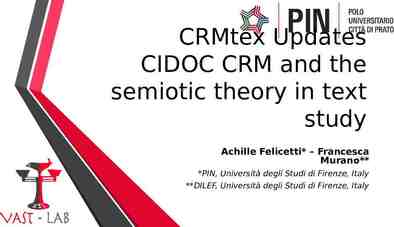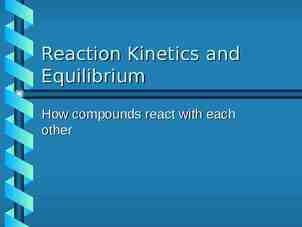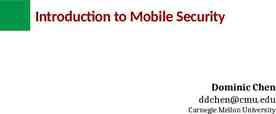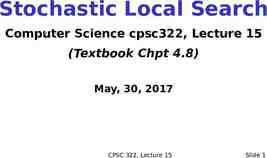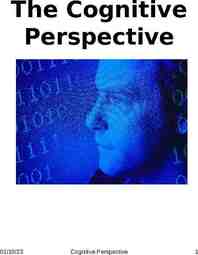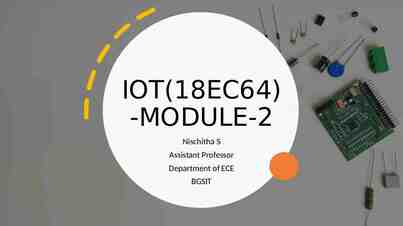Detector Status Francesco Forti, INFN and University, Pisa
33 Slides9.07 MB

Detector Status Francesco Forti, INFN and University, Pisa

SuperB Detector Babar and Belle designs have proven to be very effective for B-Factory physics – Follow the same ideas for SuperB detector A SuperB detector is possible with today’s technology. Main issues: – Machine backgrounds – somewhat larger than in Babar/Belle – Beam energy asymmetry – a bit smaller – Strong interaction with machine design Try to reuse parts of Babar as much as possible – Quartz bars of the DIRC – Barrel EMC CsI(Tl) crystal and mechanical structure – Superconducting coil and flux return yoke. May 31, 2008 Moderate R&D and engineering required – Small beam pipe technology – Thin silicon pixel detector for first layer – Drift chamber CF mechanical structure, gas and cell size – Photon detection for DIRC quartz bars – Forward PID system (TOF or focusing RICH) – Forward calorimeter crystals (LSO) – Minos-style scintillator for Instrumented flux return – Electronics and trigger – Computing – large data amount F.Forti - Detector Status 2

Detector Layout – Reuse parts of Babar BASELINE OPTION May 31, 2008 F.Forti - Detector Status 3

Detector R&D Progress Test beam goals for 2008-2010 Lots of progress Silicon Vertex Tracker – MAPS pixel devices: resolution, efficiency, R&D technical progress in all readout speed detector subsystems – Advanced trigger systems (Associative Started the definition of Memories) Drift Chamber strategies for Electronics – Cell size, shape, and gas mixture and DAQ design Particle ID system (forward system) Large computing effort for – Radiators (Aerogel, NaF) simulation – Photon detector (MCP, MAPMTs, SiPM) Subdetector groups are – Timing for TOF system building up collaboration Electromagnetic Calorimeter SuperB is included in the DevDet FP7 proposal – Forw: LYSO Crystals leakage, resolution, mechanical structure – Back: Lead-scintillator calorimeter resolution Instrumented Flux Return – Scintillator, fibers, photon detector, readout electronics – Detection efficiency, time/space resolution – Improve infrastructure for detector R&D – Mainly focused on improving Integrated slice – Track trigger, material in front of EMC, LNF Beam test facility timing for TOF, forward PID options – Electronics and software network May 31, 2008 F.Forti - Detector Status 4

Subsystems update significant R&D technical achievements and development situation of the groups working in the system and what are the main uncovered areas perspective for the TDR: – what decisions need to be taken and – what is the timeline for taking them; what R&D needs to happen – how much additional effort is needed in many cases answers will come during the workshop May 31, 2008 F.Forti - Detector Status 5

Progress in simulation Development of both fast (parametrized) and full (Geant4) simulation programs started. Reuse Babar code where possible Geant4 Model (cylindrical) – Remove dependencies from private Babar code to allow redistribution to outside Babar – Principle approved by Babar council – work on technical issues ongoing – Use more modern approach to geometry description (GDML, developed for LHC) Fast simulation targeted at physics benchmarking Geant4 simulation targeted at backgrounds May 31, 2008 E. Paoloni, M.Rama F.Forti - Detector Status 6

Achievements Simulation code able to read a GDML description of the SuperDet. GDMLs written for: the CDR cylindrical detector used for Bkg Studies a 0.0 version of the TDR SuperDet Full simulation of backgrounds events on the 0.0 SuperDet SuperB Geant4 simulation code put on a “Collaboration Wide” repository. Geant4 & GDML libraries easily available as RPM packages (Roberto Stroili) Wiki page for the documentation ( Alberto Gianoli ) BaBar geometry saved in GDML and reused wherever reasonable/useful State of the art description of the barrel EMC and of the layers 1-5 of the SVT Iron/brass plates of the IFR Rework of the simulation code to cope with flexible definitions of volumes with magnetic fields,sensitive detectors, segmentation. reasonable for SuperDet 0.0 but stil far from being satisfactory: lot of work to do

TDR SuperDet release 0.0 BaBar CsI barrel Beam lines G. Marchiori BaBar SVT Layer0 Eugenio, Giovanni LSO endcap Stefano, Claudia DCH Matteo IFR Gigi, Marcello

Goals for this meeting Decide how to validate the present simulation Fix a 0.0 ver. of the sub-detectors volumes envelopes Sketch of the requirements/strategies for the digitization of the Geant4 hits (i.e. inside/outside the Geant4 sim., inside/outside the Geant4 framework) Review of the procedures to estimate the background impact on the detectors performances and life span PID man power quest: we have the DIRC GDML description, but no one in charge to analyze at the simulation outcomes, to describe the forward endcap detector.

Fast Simulation The group has increased significantly: 7 14 people since February. Aim to involve still more people. The intermediate deadlines before Elba were met: Release of PravdaMC user guide on wiki. Investigation of use of CEPack for Trackerr replacement. Outcome: CEPack was abandoned. A new tracking code (PacTrk) is being developed. Main development areas in the past 3 months: New tracking engine Response of DIRC, EMC and IFR Interface between parts Main goals for the Elba workshop global review of the development status consolidate liaison with physics groups and plan joint activity plan of June activity in view of the first release of the code to the Users

Background simulation Lattice “MAD” decks can be transformed into G4 geometry – Machine elements and apertures are then introduced into the full simulation for evaluation of backgrounds Touchek background simulation is benchmarked with Dafne results – Good agreement – Optimization of collimators is needed after each lattice adjustement May 31, 2008 Background rate in the KLOE forward calorimeter vs. position of the internal jaw of a collimator F.Forti - Detector Status 11

SVT Main activities in the last year Basic CMOS MAPS R&D (most challenging option for the Layer0): Sr electrons Optimization of the Deep NWell MAPS pixel – 90 G. Rizzo S/N up to 25 with power consumption reduced ( 30 uW/ch) Fast redout architecture (sparsification and timestamp) implemented in a 4k pixel matrix. Preliminary test encouraging. Good sensitivity to e- from Sr90 and to from Fe55 source S/N 23 Landau Noise events mV Cluster signal (mV) APSEL4D - Fe55 5.9 keV calibration peak APSEL4D - 32x128 pixels 50 m pixel pitch APSEL4D – Sr90 test Fired pixel map with threshodl @ ½ MIP Good uniformity (the source was positioned on the left side of the matrix May 31, 2008G. Rizzo F.Forti - Detector StatusMay-31-2008 12

Design of a pixel module with integrated cooling and low material ( 1% X0) Crucial for a low material Layer 0 design with MAPS /Hybrid Pixel options Development of support structures with cooling microchannel integrated in the Carbon Fiber/Ceramics support Testbeam preparation (Sept. 2008 @CERN). Main goals: DNW MAPS matrix resolution & efficiency Thin (200 um) striplets module with FSSR2 readout chips (baseline option in the CDR) Demostrate LV1 copability with tracker information sent to Associative Memories New DAQ system developed for data push architecture T-1,2,3,4 :reference telescope modules Striplets-2 DSSD 300 m thick, 2x2 cm2 50 m r.o. pitch (3 chip FSSR2/side) S2 T-4,3 Striplets-1,2: (1.29x7.0 cm2 ) DSSD 200 m thick (45o) 25 p-side, 50 n-side m pitch 50 m r.o. pitch (chip FSSR2) MAPS-1 MAPS-2 S3 May 31, 2008G. Rizzo MAPS-1,2 : MAPS (several mm2) 50x50 m2 (50 80 m-thick) Striplets-1 F.Forti - Detector StatusMay-31-2008 S-1,2,3 scintillator T-2,1 beam S1 13

Man Power for SVT Italian Institutes already involved in basic R&D on MAPS (SLIM5 Collaboration 13 FTE) confirmed their interest for the SuperB project: Other groups (Roma III, Perugia), already active in MAPS R&D for ILC, expressed their interest for our activities (important synergy to exploit) but a significant amount of work is needed to turn the SVT CDR concept into a full detector design and write a Technical Design Report. – There is a lot of room for groups willing to join the effort! – Details in the next slide May 31, 2008G. Rizzo Pisa MAPS development Light Mechanics with integrated cooling Testbeam organization LV1 trigger with Associative Memories Pavia/Bergamo Front-end for MAPS & striplets Torino Mechanics Trieste Striplets (Sensor-FSSR2 hybrids-interconnectionsbeam telescope) Bologna DAQ for testbeam, MAPS readout architecture Milano (just joined the SVT SuperB effort) MAPS cell & module development. Light mechanics. F.Forti - Detector StatusMay-31-2008 14

SVT Activities from CDR to TDR Although very promising the MAPS technology might need more time to become mature for application in SuperB. On the timescale of the TDR the situation will be clearer For the TDR we need to have a Layer0 design based on Hybrid Pixels: a mature and viable option that anyway requires some R&D to reduce the pitch and material budget to reach the SuperB requirements. Activities already started (could benefit from more manpower): Background studies to optimize detector space-time granularity and verify radiation levels (PI) Physics studies to optimize Layer0 and overall detector geometry and granularity(PI) Strong ongoing R&D on technology development for the most challenging Layer 0 option: CMOS MAPS pixel. (BO,PI,PV,BG,TO,TS, MI .) Activities not yet covered that need to start soon: Hybrid Pixel Option: need to investigate possible material/pitch reduction w.r.t.LHC experiments Data transmission and DAQ Design of the Layers 1-5: investigate existing front-end chip, module design Integration Issues May 31, 2008G. Rizzo F.Forti - Detector StatusMay-31-2008 15

Drift Chamber G. Finocchiaro Build on BABAR drift chamber concept: no major R&D effort needed, but: Lighter structure, all in Carbon Fiber (CF) Preliminary studies show dome-shaped CF end-plates with X0 2% seem achievable (compare 13-26% in BABAR DCH) Design faster, lighter electronics (possibly taking into account detectors being considered now to be installed behind backward end-plates) To control expected increase in occupancy: – studying faster gas mixtures – considering smaller cells optimization studies need simulation tools being made available on Summer '08 meeting timescale – Tapered shape of end-plates alternative solutions being presented at this meeting Eventually, need to test all new solutions on small prototypes May 31, 2008 F.Forti - Detector Status 16

Drift Chamber Achievements: In last months, preparation work for tests with drift chamber prototypes was done – External tracking telescope made available Extrapolated accuracy O(100micron) Readout electronics (on-board discriminators) being designed now – Mechanical structure and electronics of small drift chamber prototype ready (from KLOE) Groups involved: The BABAR LNF group as of now Electronics engineers (2, part-time) expressed interest starting from 2009 May 31, 2008 F.Forti - Detector Status 17

Drift Chamber Perspective for TDR: decisions to be taken New cell structure – attack this problem with newly available simulation tools (next months) – test new cell and gas mixtures with prototypes ( 1 year from now) Define mechanical structure – simulation – Interplay with other detectors (length, offset, shape) – Once geometry outlined, make detailed FEA calculations Electronics design – Actual work starting next year – Understand requirements meanwhile Expect fruitful discussion at this meeting SMALL GROUP – NEED TO GROW May 31, 2008 F.Forti - Detector Status 18

PID D. Leith Main issues: – replacement of readout for barrel DIRC – forward PID system: if, and what. Progress in many areas: – Time of flight – Aerogel – Electronics design Who: – SLAC, BINP , Cincinnati , Ljubljana , Padua , Hawaii – System with large overlap with Belle – need to be resolved some time – More groups are needed May 31, 2008 F.Forti - Detector Status 19

PID TDR path Forward PID ? – Physics case – Effect on other systems If yes, what technology ? – TOF, Focusing Aerogel – Design of system – Technical work on detectors – Beam tests – engineering Barrel changes from Babar – Small SOB choice – Optical coupling of bars to photo-detector – Wedge or no wedge ? – Choice of photodetector – Prototyping and beam tests – Engineering Disassembly, transport, reinstallation and commissionin – Lots of engineering Sotware, Electronics May 31, 2008 F.Forti - Detector Status 20

Electromagnetic calorimeter D. Hitlin The BABAR CsI(Tl) barrel calorimeter, should, with minor modifications, be an adequate device for SuperB – Add two or three rings of crystals to extend rear coverage – Shorten effective integration time of the digital filter – Effect of lack of projectivity due to displacement of the IP is an issue for study Most effort has gone into identifying appropriate technology for the front and rear endcaps. Leading candidates: – Front endcap: LYSO with APD readout – Rear endcap (primarily a missing energy veto): Lead (0.5 X 0) with scintillating tiles and fiber SiPM readout Monte Carlo studies for design of forward endcap are welladvanced Confronting design concepts with physics benchmarks is next Bergen, Caltech, Edinburgh, McGill, Perugia, QMC (U of London) May 31, 2008 F.Forti - Detector Status 21 21

Forward Endcap Geometry – Front crystal face in the range of one Molière radius: 25mm Constraint: maximize crystal yield/boule Beam test provides focus – Optimize crystal quality – Ascertain mechanical properties of LYSO – Devise readout and electronics chain – Calibration and system issues – Monte Carlo and analysis tools May 31, 2008 F.Forti - Detector Status 22 22

Rear Endcap Many of the main physics objectives of SuperB use missing energy signatures Improving backward calorimeter coverage, and thus overall hermeticity, can pay large dividends in signal/background Only modest energy resolution is required BKGD/Signal with smearing The drift chamber electronics and DIRC tunnel provide severe constraints A scintillating tile design provides adequate flexibility 10K SiPM channels May 31, 2008 B Backward polar angle coverage (radians) F.Forti - Detector Status M. Mazur 23 23

SuperB-IFR: detection efficiency R. Calabrese Present baseline configuration: scintillator: 1.5cm thick with embedded hole Fiber: One Saint-Gobain BCF- 92 1.0 mm diameter Readout: Geiger mode APDs from Hamamatsu and IRST-FBK 1.5 p.e. Cut pedestal 2 p.e. 1 p.e. adc channels Average number of p.e.: 9 at maximum distance ( 4m) ADC spectrum for MPPC fiber 350 cm long Fiber Kuraray T11- 300 ppm shows higher light yield but slower time response Average number of phe Efficiency better that 95% Tests on scintillator with surface groove instead of embedded hole are F.Forti - Detector Status underMay way31, 2008 24 Distance from photodetector (cm)

1.5cm thick scintillator SaintGobain BCF- 92 fiber 1.0 mm diameter counts SuperB-IFR: time resolution Distance 200 cm sigma 1.3 ns SiPM Distance 200 cm sigma 1.8 ns MPPC The trigger scintillator is 15cm long so we expect a contribution of about 0.8ns due to that The time resolution is 2 ns and is better with SiPM (IRST- FBK) than with MPPC (Hamamatsu) Time resolution studies are under way: - kuraray vs Saint-Gobain fibers - precise study of SiPM time response - use of a fast discriminator board May 31, 2008 F.Forti - Detector Status 25

SuperB IFR group institutions and activities At present: Ferrara INFN-University Padova INFN-University Roma1 INFN-University Additional forces would be very helpful, in particular in the area of simulation For the TDR: Establish the baseline layout of the detector (R&D on scintillator, fiber, SiPM, electronics, simulations) Build and test a prototype (end 2009/beginning 2010) To build, install and operate the final detector May 31, 2008 F.Forti - Detector Status need more institutions 26

Trigger/DAQ/Electronics G. Dubois-Felsmann D. Breton Fast Control and Timing System (FCTS) protocol proposal put forward. Two options: 1. 2. Subsystems need to understand (basically now) what their data volume is going to be – Number of bits, Readout rate, Event size Understand if it fits in the 100KHz, 1% deadtime requirement A change in model can be very costly – Both in euros and in people Need to start looking at electronics issues – – BaBar-like fixed-latency model Variable latency with addressing by time, and queueing of triggers Uniform design and common architecture across systems Radiation hardness Very thin on manpower May 31, 2008 F.Forti - Detector Status 27

Workshop goals Clarify path towards the Technical Design Report Define R&D program Bring more people on board Subsystem conveners –MDI/Backgrounds – Paoloni/Biagini –SVT – Rizzo –DCH – Finocchiaro –PID – Leith –EMC – Hitlin –IFR – Calabrese –Electronics/Trigger/DAQ – Breton/Dubois-Felsmann –Computing – Morandin Rough institutional roll call today System SVT DCH PID EMC IFR Trigger/DAQ Computing Electronics Institutions PI, PV-BG, TO, MI, TS, BO, (PG, RM3) LNF SLAC, BINP , Cincinnati, Ljubljana, PD, Hawaii. Bergen, Caltech, Edinburgh, McGill, Perugia, QMC (U of London) FE, PD, RM1 SLAC, Caltech PD, FE, TO, BO, RM2, PI, PG, LNF LAL, SLAC, Caltech May 31, 2008 Now’s the time to say: “Me, too !” F.Forti - Detector Status 28

Workshop map May 31, 2008 F.Forti - Detector Status 29

BACKUP

Accelerator and site costs Number EDIA Labor M\&S Rep.Val. Unitsmm mm kEuro kEuro WBS Item 1 Accelerator 5429 3497 191166 126330 1.1 Project management 2112 96 1800 0 1.2 Magnet and support system 666 1199 28965 25380 1.3 Vacuum system 620 520 27600 14200 1.4 RF system 272 304 22300 60000 1.5 Interaction region 370 478 10950 0 1.6 Controls, Diagnostics, Feedback 963 648 12951 8750 1.7 Injection and transport systems 426 252 86600 18000 Number EDIA Labor M\&S Rep.Val. Unitsmm mm kEuro kEuro 1424 1660 105700 0 WBS Item 2.0 Site 2.1 Site Utilities 820 1040 31700 0 2.2 Tunnel and Support Buildings 604 620 74000 0 Note: site cost estimate not as detailed as other estimates. May 31, 2008 F.Forti - Detector Status 31

Detector cost WBS Item EDIA mm Labor mm 1 SuperB detector 3391 1873 1.0 1.1 1.1.1 1.1.2 1.1.3 1.2 1.3 1.3.1 1.3.1 1.3.2 1.4 1.4.1 1.4.2 1.4.3 1.5 1.6 1.7 1.8 1.9 1.A Interaction region Tracker (SVT L0 MAPS) SVT L0 Striplet option L0 MAPS option DCH PID (DIRC Pixilated PMTs TOF) DIRC barrel - Pixilated PMTs DIRC barrel - Focusing DIRC Forward TOF EMC Barrel EMC Forward EMC Backward EMC IFR (scintillator) Magnet Electronics Online computing Installation and integration Project Management 10 248 142 23 106 113 110 78 92 32 136 20 73 42 56 87 286 1272 353 720 4 348 317 33 32 104 222 152 179 70 222 5 152 65 54 47 213 34 624 0 M\&S kEuro Rep.Val. kEuro 40747 46471 210 5615 4380 324 1235 2862 7953 4527 6959 3426 10095 171 6828 3096 1268 1545 5565 1624 3830 180 0 0 0 0 0 0 6728 6728 6728 0 30120 30120 0 0 0 9623 0 0 0 0 Note: options in italics are not summed. We chose to sum the options we considered most likely/necessary. May 31, 2008 F.Forti - Detector Status 32

Schedule Overall schedule dominated by: – Site construction – PEP-II/Babar disassembly, transport, and reassembly We consider possible to reach the commissioning phase after 5 years from T0. May 31, 2008 F.Forti - Detector Status 33

